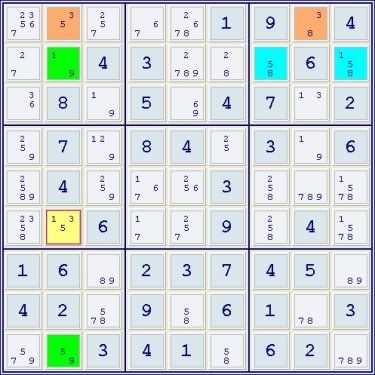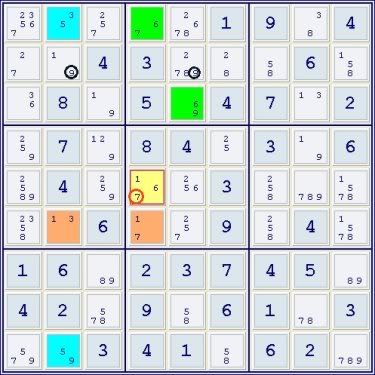- Code: Select all
. . . | . . 1 | 9 . 4
. . 4 | 3 . . | . 6 .
. 8 . | 5 . 4 | 7 . 2
------+-------+------
. 7 . | 8 4 . | 3 . 6
. 4 . | . . 3 | . . .
. . 6 | . . 9 | . 4 .
------+-------+------
1 6 . | 2 3 7 | 4 5 .
4 2 . | 9 . 6 | 1 . 3
. . 3 | 4 1 . | 6 2 .
And here's the partial solution with the candidate lists:
- Code: Select all
*--------------------------------------------------------------------*
| 23567 35 257 | 67 2678 1 | 9 38 4 |
| 27 19 4 | 3 2789 28 | 58 6 158 |
| 36 8 19 | 5 69 4 | 7 13 2 |
|----------------------+----------------------+----------------------|
| 259 7 129 | 8 4 25 | 3 19 6 |
| 2589 4 259 | 167 256 3 | 258 789 1578 |
| 2358 135 6 | 17 257 9 | 258 4 1578 |
|----------------------+----------------------+----------------------|
| 1 6 89 | 2 3 7 | 4 5 89 |
| 4 2 578 | 9 58 6 | 1 78 3 |
| 579 59 3 | 4 1 58 | 6 2 789 |
*--------------------------------------------------------------------*
Simple Sudoku has no more hints. What to do?






